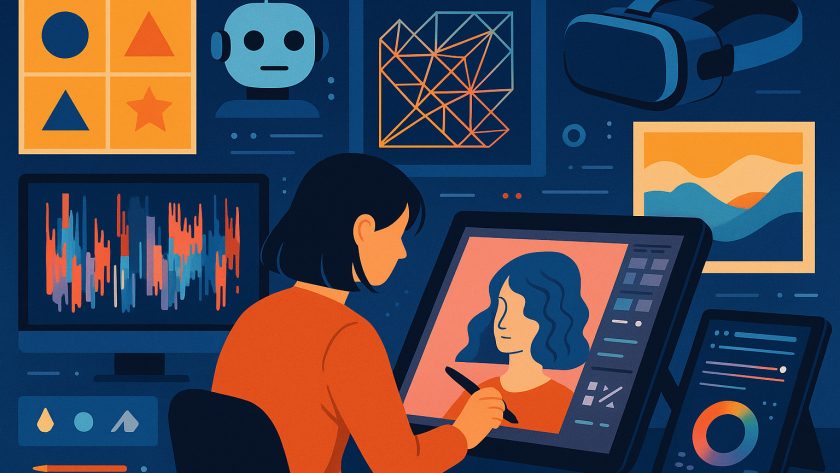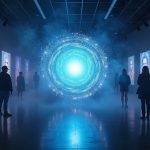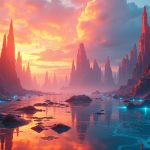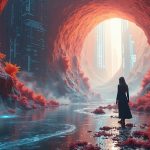Digital art isn’t just a new tool; it’s a seismic shift. It’s redefining the relationship between creator, medium, and audience. Whether through algorithm-driven installations or hand-drawn illustrations crafted with a stylus, the boundaries of art have stretched, splintered, and reformed.
From Canvas to Code
Art used to be confined by physicality—paint, canvas, sculpture, ink. Today, an iPad or VR headset can hold an entire studio. Software such as Procreate, Adobe Fresco, and Blender has opened avenues not available with brushes and chisels. Artists are building with pixels, shaping ideas in 3D, and experimenting with layers that never dry or crack.
No studio rent. No wasted materials. No waiting for paint to dry. Every medium is a tap away.
Access Over Gatekeeping
The gatekeepers—galleries, curators, critics—no longer control exposure. Platforms like Instagram, Behance, and ArtStation allow artists to find their audiences directly. NFTs added a financial model that skipped traditional art sales altogether. A digital illustrator in Lagos can sell work to a collector in Berlin without crossing borders or paying commission.
Digital art has amplified equity. It’s not about who you know; it’s about what you post.
Collaborations Without Borders
Shared whiteboards. Cloud-based canvases. Real-time animation syncing. Artists can collaborate across continents. Musicians, programmers, and animators work alongside illustrators in one timeline. A concept designer in Seoul might build a visual universe with a writer in São Paulo and an AI researcher in Boston.
The absence of physical constraints has bred new genres:
- Generative art using code and randomness.
- AI-assisted sketching that completes compositions based on training data.
- Interactive installations that shift depending on viewer motion or input.
The Rise of New Genres
Digital art isn’t a translation—it’s a language of its own. It has bred forms that didn’t exist before.
1. Glitch Art
What began as a mistake—corrupted files, distorted images—became a movement. Artists now intentionally break images to highlight flaws in systems, memories, and technology itself.
2. Procedural and Generative Design
Using algorithms, artists set parameters and let the system ‘draw.’ Each piece is a one-of-a-kind iteration, sometimes numbered in the thousands but never identical.
3. Mixed Reality
Augmented and virtual reality art installations immerse viewers in ways flat surfaces never could. You’re not looking at the art—you’re walking through it.
4. Interactive Storytelling
Games, webtoons, and scrollable stories combine animation, text, and music into layered expressions. The audience doesn’t watch passively; they participate.
Tools Are Shaping Aesthetics
The software used influences the final piece. Procreate sketches often bear clean strokes and vibrant palettes. Blender art leans toward hyperreal lighting and 3D rendering. Touchscreen interfaces create gestures that a mouse can’t replicate. The tools themselves are now part of the style.
Compare:
- Photoshop-era digital paintings: Heavy on blending and textures.
- AI-enhanced renders: Lush, surreal, often uncanny.
- Pixel art: Aesthetic tied to nostalgia, reborn through retro games.
Speed and Iteration
Speed has changed the way artists think. With “undo” buttons, layers, and non-destructive workflows, the margin for error is wide. Experimentation thrives. Artists can try dozens of versions of an idea without losing earlier drafts.
This leads to:
- Faster learning curves.
- Broader stylistic experimentation.
- Volume-driven output for social and commercial needs.
An artist can design a brand identity in the morning, animate a scene in the afternoon, and post a webcomic before bed.
Archiving and Preservation
Every digital brushstroke is stored, backed up, versioned. There’s no fading, no mold, no tearing. Digital art can live across drives, clouds, and blockchains. Artists no longer need to worry about acid-free paper or fireproof vaults.
Yet, the tradeoff? File corruption. Outdated formats. Software dependencies. Digital art needs digital preservation strategies.
Ethics and AI Involvement
AI tools are increasingly involved in creation—sometimes as assistants, sometimes as authors. While some see this as progress, others raise ethical concerns about training data, authorship, and creative ownership.
Key concerns include:
- Was the model trained on copyrighted art?
- Can an artist’s style be copied without permission?
- Is the final work authored by the human or the machine?
These questions haven’t been answered. They’ve just been asked—loudly.
Democratization Without Dilution
Skeptics argue that easy access lowers the bar. Templates, filters, and presets make creation faster, but not necessarily better. Yet quality hasn’t vanished—it’s simply surrounded by more noise.
The best digital artists are not those with the flashiest apps, but those who understand visual language, intent, and storytelling. The tools amplify skills; they don’t replace them.
Where Art Meets Commerce
Digital art dominates advertising, gaming, streaming media, and branding. Companies commission concept art for animated films, digital avatars for campaigns, and illustrations for mobile apps. What once might’ve been a poster on a gallery wall is now a loading screen in a video game or a background in an animated reel.
This commercial demand is reshaping what artists learn and where they apply their craft:
- UI design requires visual storytelling.
- Game art blends character design with environmental mood.
- Social media content needs punchy visuals at rapid intervals.
Conclusion Rewritten Without the Word
Digital art isn’t waiting for permission. It’s already changed how art is made, shared, and understood. The shift isn’t just technological—it’s conceptual. Artists are thinking differently because their tools allow different questions, different workflows, and different audiences.
From sketchpad to screen, the creative process has expanded. And that expansion shows no sign of slowing.



